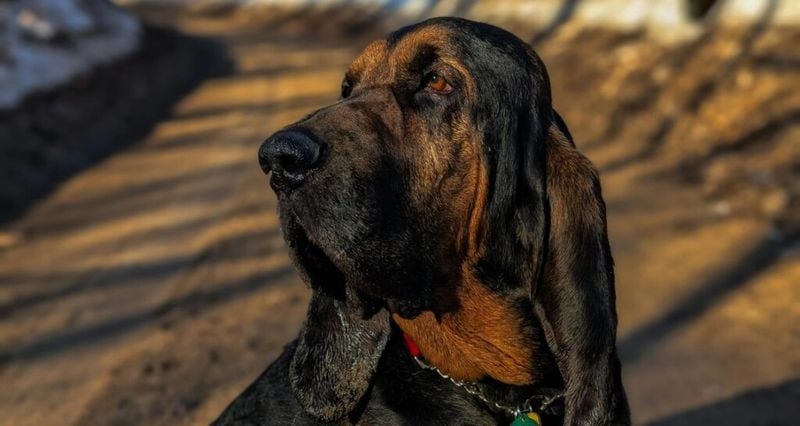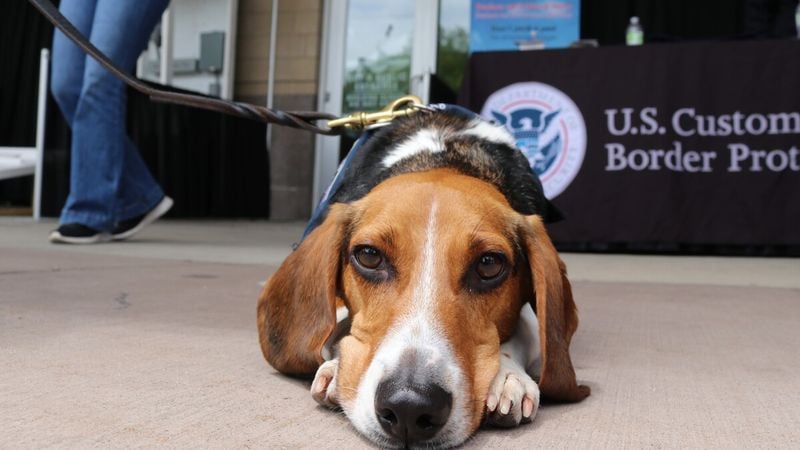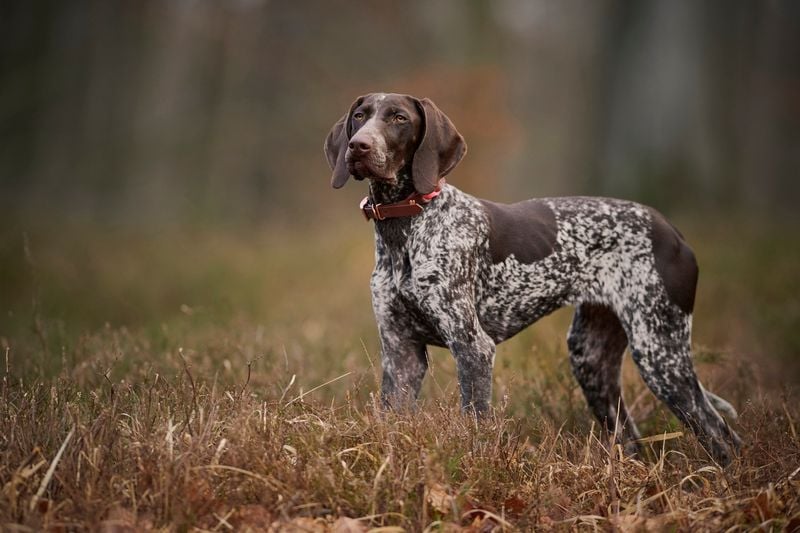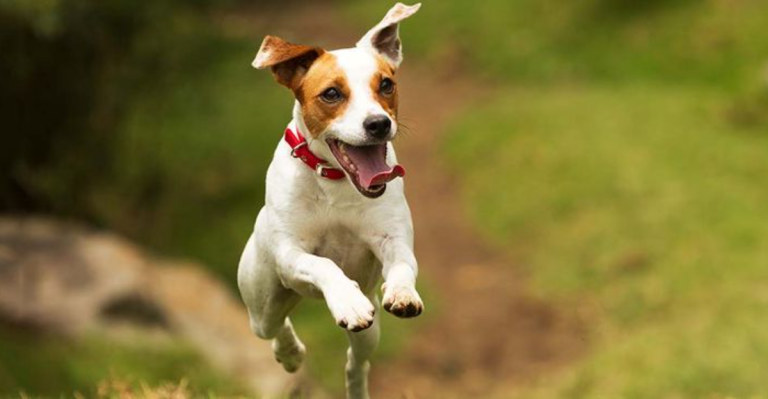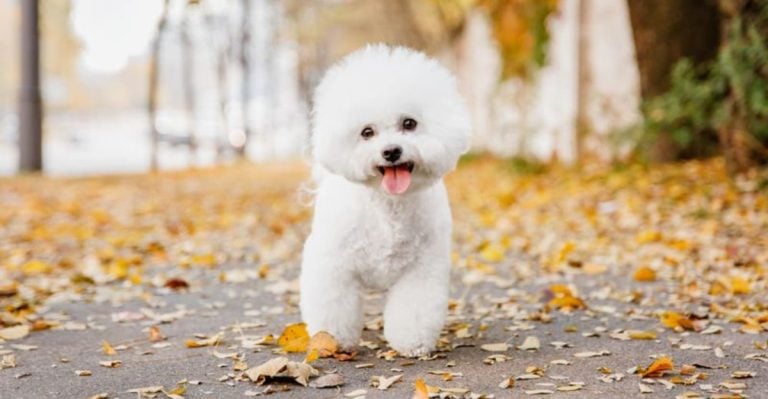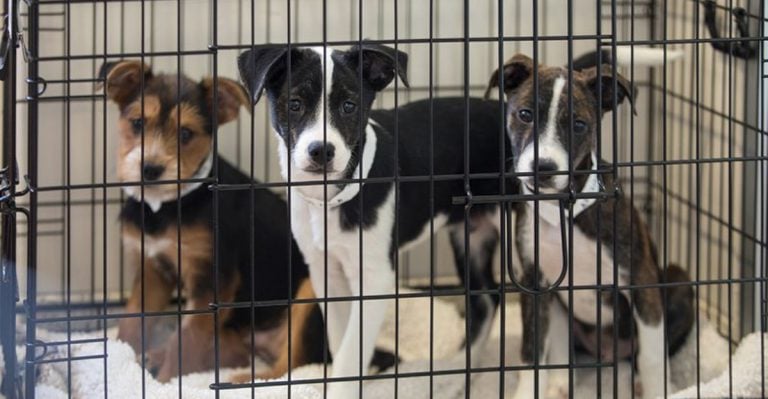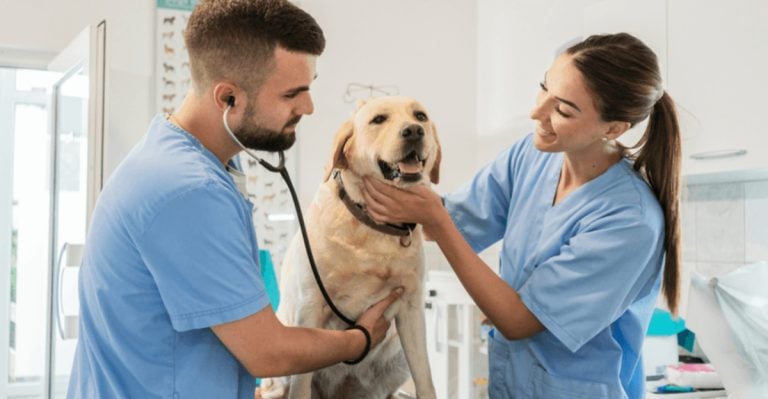13 Dogs With Noses So Good, They’re Basically Superpowers
Dogs have an incredible sense of smell that makes human noses seem practically useless in comparison. While we humans have about 6 million scent receptors, dogs can pack up to 300 million depending on the breed.
This super-powered sense allows certain dogs to detect everything from missing persons to medical conditions and even tiny amounts of substances that would be completely invisible to us.
Here are 13 amazing breeds whose noses are working overtime in ways that seem almost magical.
1. Bloodhound: The Living Scent Machine
Bloodhounds possess an astonishing 300 million scent receptors – the most of any dog breed on earth. Their droopy skin and wrinkles actually help trap scent particles, making them natural scent collectors as they move.
Law enforcement relies on these remarkable trackers who can follow trails over 300 hours old and across distances exceeding 130 miles. Their scent evidence is so reliable it’s actually admissible in court!
A bloodhound’s long ears serve a purpose beyond their adorable appearance – they sweep scent particles from the ground up toward the nose, essentially stirring up smells like a living scent vacuum cleaner.
2. Basset Hound: Low-Rider Scent Detective
Standing just inches off the ground, Basset Hounds were engineered for scent-tracking brilliance. Their short legs keep their powerful noses close to the ground where scents linger strongest, while those massive ears sweep additional scent molecules upward with each step.
Originally bred to hunt rabbits and hares in France, these dogs can filter out environmental distractions completely when they lock onto a smell. Many owners report their Bassets become almost impossible to redirect once they’ve caught an interesting scent.
Their nostrils are specially structured to allow continuous scent collection – they can breathe out while still taking in new smells, creating an uninterrupted stream of olfactory information.
3. Beagle: Pocket-Sized Scent Powerhouse
Don’t let their compact size fool you – Beagles pack a serious scenting punch with approximately 225 million scent receptors. The breed’s extraordinary nose makes them the Department of Homeland Security’s preferred detection dogs at airports and border crossings.
Beagles excel at distinguishing individual scent components within complex mixtures. This talent explains why they can pick out a single contraband item inside a suitcase filled with other strong-smelling objects like perfumes and foods.
Their scent memory is exceptional too – once a Beagle learns a specific smell, they rarely forget it. This remarkable ability, combined with their friendly, non-threatening appearance, makes them perfect for sensitive detection work around travelers.
4. German Shepherd: The Multi-Scent Master
German Shepherds combine exceptional intelligence with roughly 225 million scent receptors, creating the ultimate versatile working dog. Their scenting abilities extend beyond simple tracking to differentiating between dozens of specific target odors.
Police K-9 units worldwide favor German Shepherds for their ability to switch between tracking missing persons, detecting narcotics, and finding explosives – sometimes all in the same shift. Their noses can detect substances in concentrations as small as parts per trillion.
Most impressive is their ability to work through overwhelming environmental distractions. A well-trained German Shepherd can follow a specific human scent through crowds, across water, and even in areas deliberately contaminated with strong odors meant to throw them off.
5. Labrador Retriever: The Versatile Scent Specialist
Labrador Retrievers combine an extraordinary nose with an unmatched eagerness to please, making them scent-detection superstars. Their water-resistant coats hint at another scenting advantage – Labs can track scents underwater, detecting submerged objects that human divers might miss completely.
Medical detection Labs can identify cancer cells with over 90% accuracy, sometimes before advanced medical equipment can. They’re also pioneering seizure prediction, alerting patients up to 15 minutes before an episode by detecting subtle scent changes in the person’s body chemistry.
Labs excel at diabetic alert work too, sensing dangerous blood sugar fluctuations through breath and skin secretions, potentially saving lives when monitors fail or during sleep when symptoms might go unnoticed.
6. Coonhound: The Nighttime Scent Tracker
Coonhounds represent olfactory excellence specifically evolved for challenging nocturnal hunting conditions. Their specialized nose structure allows them to track animals that passed through an area many hours earlier, even in complete darkness.
What makes their scenting truly remarkable is the ability to distinguish between “hot” and “cold” trails. A skilled Coonhound knows instantly whether a scent trail is fresh or hours old, adjusting their tracking strategy accordingly. They can even track scents that have been rained on!
Their famous “bawling” – the distinctive howl when following a scent – serves a practical purpose. It communicates to human hunters not just that they’ve found a trail, but information about how fresh it is and which direction the quarry is moving.
7. Belgian Malinois: The Tactical Scent Detector
Belgian Malinois combine exceptional scenting abilities with extraordinary athleticism and focus. Military units worldwide deploy these dogs to detect explosives, weapons, and people in the most challenging environments on earth – from desert heat to arctic conditions.
Their scent discrimination abilities border on supernatural. A trained Malinois can identify specific individuals from lineups based solely on scent samples, distinguish between identical twins, and even track scents through water and across concrete – surfaces that defeat many other breeds.
Most impressive is their scent-detection stamina. While many dogs lose effectiveness after 20-30 minutes of intense scenting work, Malinois can maintain peak performance for hours, making them invaluable for searching large areas or complex environments.
8. Springer Spaniel: The Enthusiastic Scent Finder
Springer Spaniels bring boundless energy and extraordinary scenting precision to detection work. Their unique talent lies in “quartering” – systematically covering ground in a zigzag pattern that maximizes the area their nose can sample, missing nothing in their path.
Customs agencies worldwide employ Springers to detect everything from smuggled wildlife to currency. Their non-threatening appearance makes them ideal for crowded places where larger detection dogs might cause anxiety. The breed’s exceptional focus means they can work effectively even in chaotic environments.
Perhaps most impressive is their versatility – a well-trained Springer can switch between detecting different target scents on command, essentially carrying an entire scent library in their remarkable nose and retrieving the right “search program” when instructed.
9. English Foxhound: The Relentless Scent Pursuer
English Foxhounds represent centuries of selective breeding for scent-tracking endurance. Their specialized nasal structure allows them to process scent information while running at full speed – a rare talent even among scenting breeds.
Most impressive is their “pack scenting” ability. Working together, Foxhounds create a collective scent intelligence, with each dog contributing information about the trail. This allows the pack to maintain tracking accuracy even when individual dogs might momentarily lose the scent.
Their respiratory system shows special adaptations for scenting work too. Enlarged sinus cavities and specialized tissue in their nasal passages help them filter and process more scent particles with each breath, allowing them to maintain scent clarity even after hours of tracking in challenging conditions.
10. Dachshund: The Underground Scent Specialist
Originally bred to hunt badgers in their burrows, Dachshunds possess specialized scenting abilities perfectly adapted for underground work. Their elongated snouts create more surface area for scent receptors, while their lung capacity is surprisingly large for their size.
Modern Dachshunds retain this remarkable underground scenting ability. They can detect prey animals through layers of soil and track scents through tunnel systems where air circulation is minimal. Their nose sensitivity is estimated to be about 100,000 times more acute than humans.
Surprisingly, Dachshunds excel at truffle hunting too! Their precise noses can pinpoint these valuable fungi growing underground without damaging them. Some European truffle hunters still prefer Dachshunds over specialized pig breeds because they’re less likely to eat the valuable finds.
11. Golden Retriever: The Gentle Scent Detective
Golden Retrievers combine exceptional scenting abilities with a temperament perfectly suited for sensitive detection work. Their noses contain approximately 220 million scent receptors, giving them extraordinary olfactory precision.
Search and rescue teams value Goldens for their ability to distinguish between living and deceased persons – a critical skill in disaster zones. They can detect human scent through concrete, snow, water, and debris, often locating survivors when technology fails.
Medical research has revealed another Golden talent: detecting certain cancers with accuracy exceeding 90%. They can identify subtle scent markers in breath, urine, and skin samples that indicate malignancy, sometimes before conventional medical tests can detect the disease. Some medical centers now employ Golden Retrievers as cancer screening assistants.
12. German Shorthaired Pointer: The All-Terrain Scent Tracker
German Shorthaired Pointers possess a remarkable olfactory system specifically adapted for multi-environment tracking. Their specialized nasal chambers can simultaneously process ground scents, airborne particles, and water-borne molecules – a rare triple-threat in the dog world.
Conservation teams utilize GSPs to locate endangered species, track wildlife populations, and detect invasive plants. Their precision is astonishing – trained Pointers can distinguish between nearly identical plant species by scent alone, helping biologists map ecosystem changes.
Their most impressive talent might be their scent memory. GSPs can remember and distinguish between hundreds of different odor profiles, recalling specific scents they encountered only briefly months earlier. This exceptional ability makes them invaluable for complex environmental monitoring projects spanning multiple seasons.
13. Harrier: The Marathon Scent Tracker
Harriers represent the perfect balance between scenting power and physical endurance. Their specialized respiratory system allows them to collect scent information continuously even while running for hours – maintaining olfactory precision that most breeds can only achieve when moving slowly.
Originally bred to track hares across diverse terrains, Harriers developed the ability to follow scent molecules that have been dispersed by wind, scattered by rain, or diluted by time. Their tracking stamina is legendary – historical records document Harriers maintaining scent trails for over 20 hours without rest.
Modern search teams value Harriers for rural searches covering vast areas. Their combination of speed, endurance, and scenting precision makes them especially effective for time-sensitive missing person cases in wilderness areas where ground scents disperse quickly.

